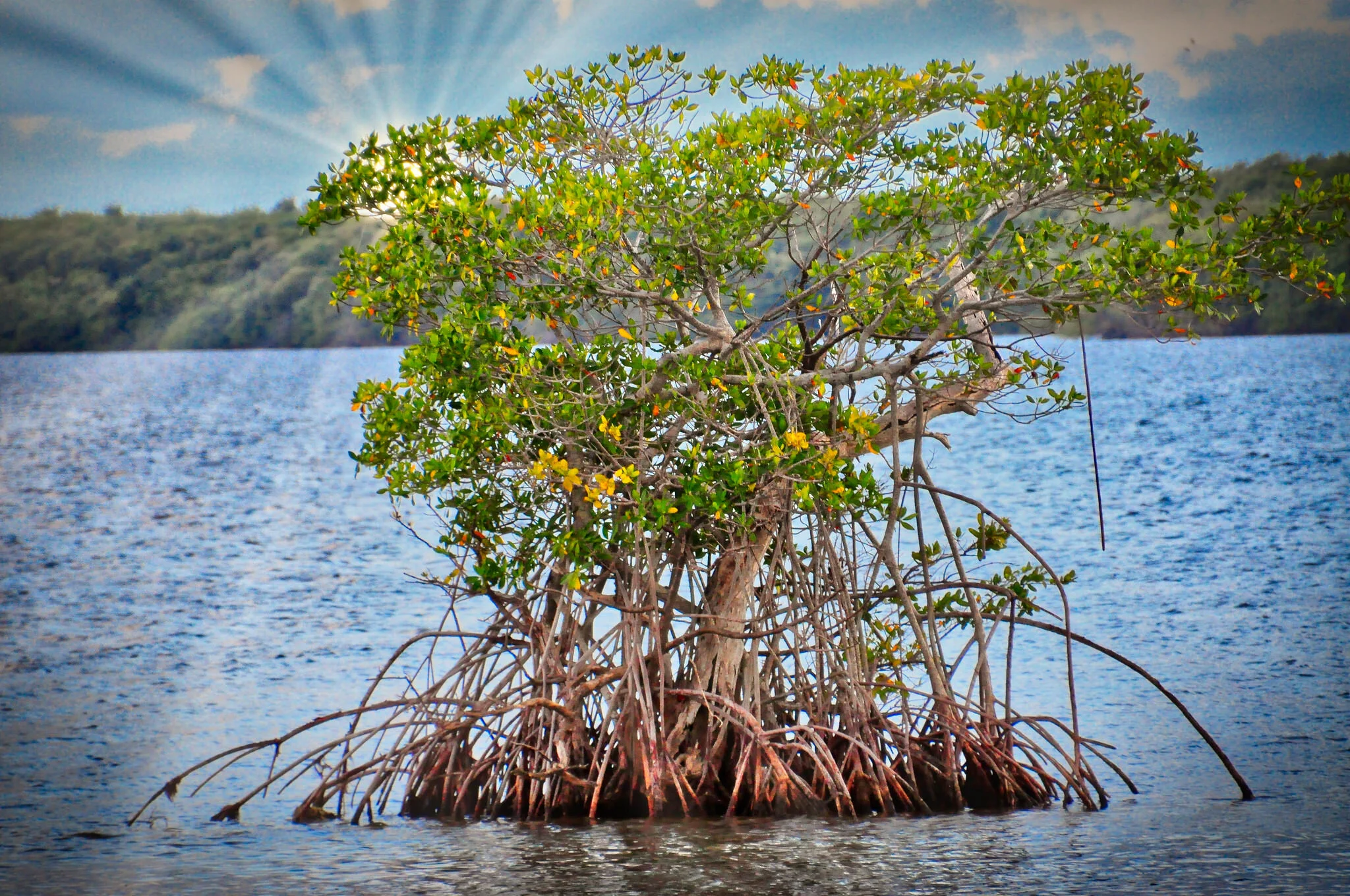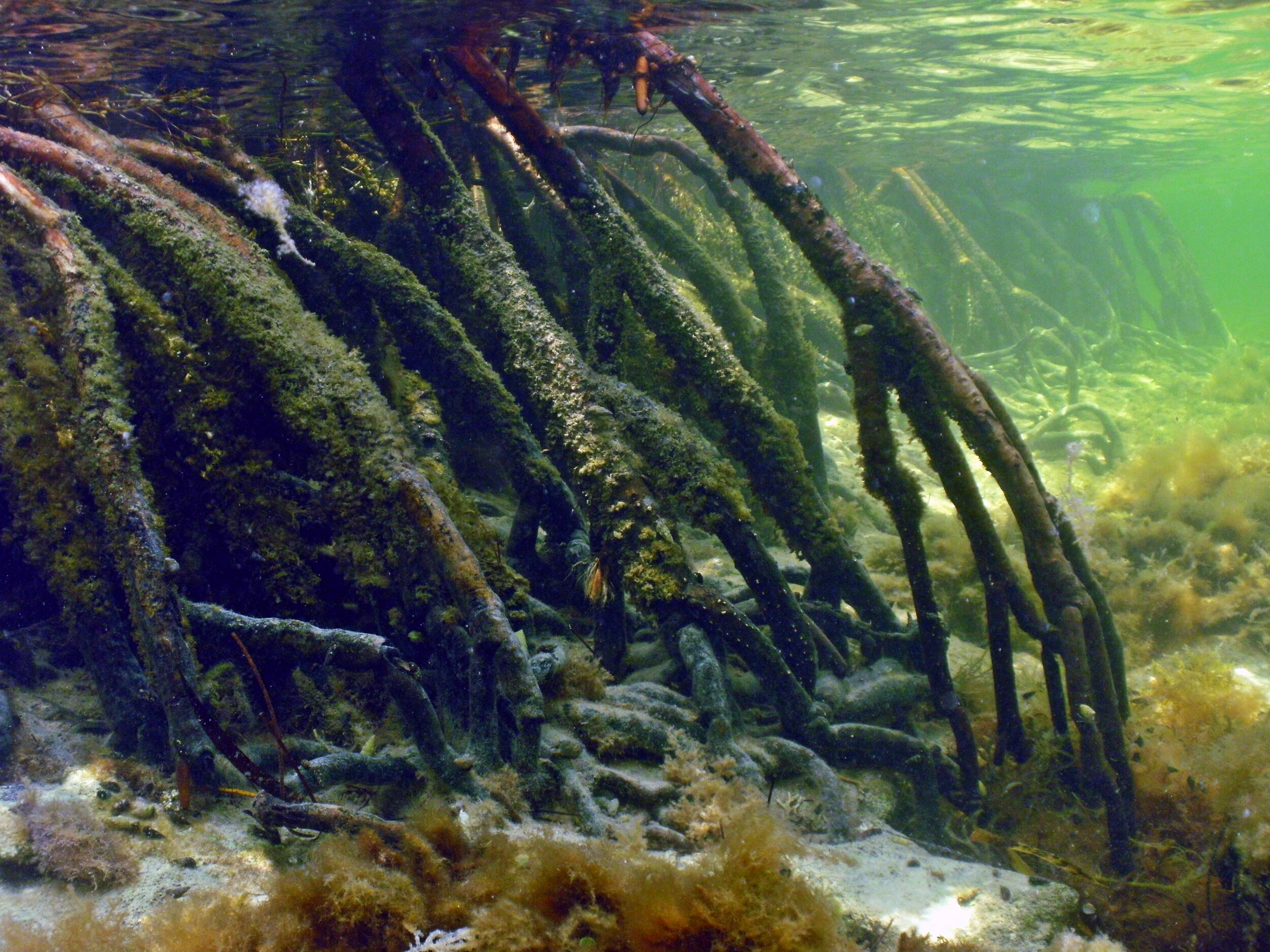Mangrove forests are among the most productive ecosystems on Earth. Bridging the gap between land and sea, these forests function as important habitats for organisms of all shapes, sizes, and ecologies. From a purely structural standpoint, mangrove forests are vital for stabilizing coastlines, reducing erosion, and minimizing damage from storm surges. They are also extremely important habitats for carbon sequestration.
The key component of the carbon storing abilities of mangrove forests involves the formation of peat. Whereas we tend to think of bogs when we think about peat, mangroves form it as well. Peat is the result of the accumulation of partially decomposed vegetation and other organic matter. It’s the partially decomposed part of peat that makes it a major carbon store. Because it doesn’t decompose, all of the carbon locked up in the organic matter stays there instead of entering back into the atmosphere.
As they grow, the roots of mangrove forests accumulate debris and sediments, which builds and builds over time. As the organic layer grows, mangroves grow upward on their propped roots. Over decades and centuries, massive quantities of peat can develop under mangrove forests. This is also one of the ways by which coastal land develops. Needless to say, mangrove forests are extremely important ecosystems.
Photo by Phils 1stPix Licensed under CC BY-NC-SA 2.0
Sadly, because they occur along the coast, mangrove forests the world over have been degraded and destroyed at unsustainable rates. As these forests are razed, the land supporting them erodes, removing all of the accumulated sediments and peat. Not only does this destroy all of the ecological and economic benefits of mangrove forests, it also releases huge quantities of carbon.
In recent years, humans have finally begun to realize the environmental and economic costs of mangrove destruction and many regions are starting to implement mangrove restoration efforts. However, the success of any restoration can sometimes take years or even decades to fully assess. This is where chronosequences come in. By studying mangrove restoration projects at different stages of development, scientists can better understand mangrove restoration efforts over relatively short time periods instead of having to wait for individual projects to age to collect all of their data.
Recently, researchers in Florida decided to look at peat accumulation in various mangrove restoration projects. They looked at mangrove restorations of various ages, spanning 25 years of effort. They found that soil and peat accumulation in these forests is surprisingly rapid. In terms of soil accumulation, restored mangrove forests kept pace with and even outpaced natural mangrove forests within the first 5 years of restoration. Even more exciting, peat accumulation in these restored mangrove forests was very rapid, occurring within only a decade of the completion of a mangrove restoration attempt. When you consider the fact that each of the restoration projects they studied started in nothing but pure sand, these results are extremely encouraging.
The scientists point to mangrove roots as the main driver of soil and peat accumulation in these restored forests. As mangroves grow, their roots expand into the surrounding sand. As roots grow and die, they leave all of that organic matter in the soil. Also, the more roots there are, the more debris like wood, leaves, and sediments get trapped in and around the mangroves. This is why peat accumulation occurs so rapidly. What’s more, as sediment and peat builds up below the mangroves, their height increases. At current, the increase in height of these restored mangrove forests is outpacing the rate of sea level rise in coastal Florida. These are encouraging results when one considers just how fast these coastal habitats are changing as our climate continues to change.
The authors of this research are quick to point out that the fast rates of peat accumulation and mangrove growth are likely to slow as these ecosystems mature. Eventually, many of these processes are likely to balance out. They estimate that it would take at least 55 years for mangrove restoration projects in Florida to match their natural counterparts in terms of ecosystem services. Nonetheless, many components of healthy mangrove ecologies, like herbaceous and juvenile vegetation layers, are already established in restorations long before that 55 year mark.
These results are very exciting. Though there is no substitute for protecting natural mangrove forests (or any wild space for that matter), we need to start putting the pieces of our planet back together. If these data are representative of mangrove restoration efforts across the world, there is hope yet that we can replace at least some of what has been lost. Still, until more of the human race starts to value protecting wild spaces and the species they support, we stand to loose so much more. Support your local land conservancy today!!
Further Reading: [1]


